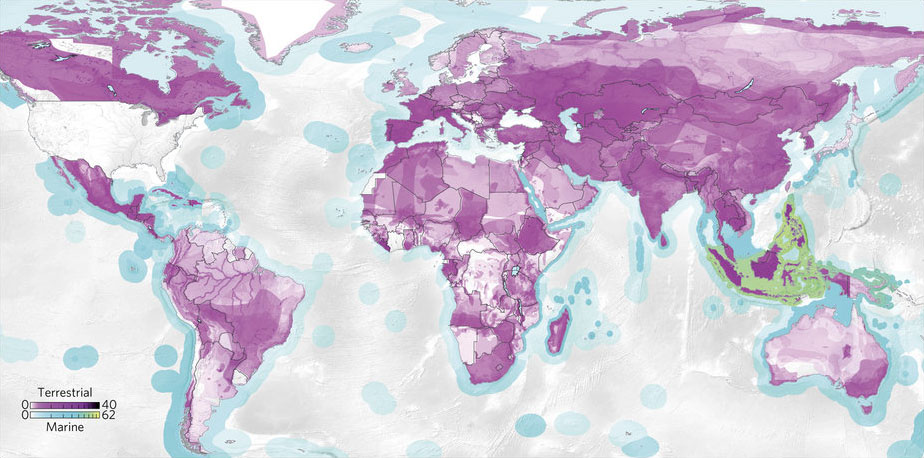Research Abstract
世界のサプライチェーンから種の脅威のホットスポットを特定する
Identifying species threat hotspots from global supply chains
2017年1月4日 Nature Ecology & Evolution 1 : 23 doi: 10.1038/s41559-016-0023

種の脅威のホットスポットを特定することは、保護の優先順位を設定するための効果的な手法であった。多くのホットスポットで輸出企業が乱開発を推進し続けていることは、保護の重要課題の1つである。保護の措置は、影響を受けている地点のみならず、根本的に資源の利用を引き起こしている消費者の需要も考慮する必要がある。どの種の脅威のホットスポットがどの消費者によって生み出されているのかを理解するため、我々は、国際自然保護連合(IUCN)の「絶滅のおそれのある生物種のレッドリスト」の絶滅危惧種のホットスポットに一群の生物多様性フットプリント勘定を結びつける新たな手法を考案した。その成果が、世界規模の生産によって生み出された空間的に明瞭なホットスポットに消費を結びつけた地図である。財とサービスの消費によって生み出される生物多様性の脅威のホットスポットを特定することは、保護活動の目標をさらに的確なものとするために保護推進派、消費者、企業、および政府を結びつけるのに役立つ。
Corresponding Author
Identifying hotspots of species threat has been a successful approach for setting conservation priorities. One important challenge in conservation is that, in many hotspots, export industries continue to drive overexploitation. Conservation measures must consider not just the point of impact, but also the consumer demand that ultimately drives resource use. To understand which species threat hotspots are driven by which consumers, we have developed a new approach to link a set of biodiversity footprint accounts to the hotspots of threatened species on the IUCN Red List of Threatened Species. The result is a map connecting consumption to spatially explicit hotspots driven by production on a global scale. Locating biodiversity threat hotspots driven by consumption of goods and services can help to connect conservationists, consumers, companies and governments in order to better target conservation actions.

